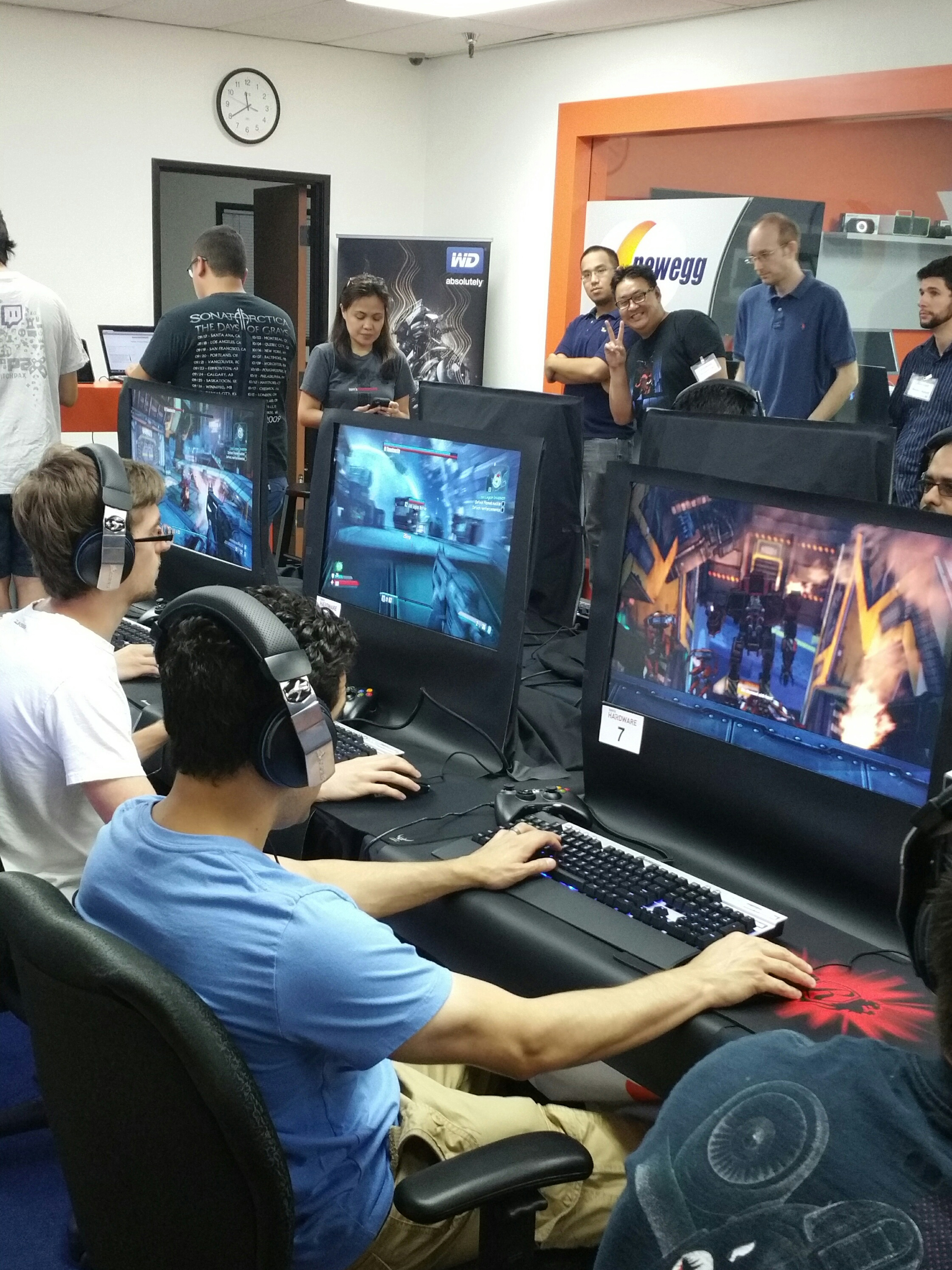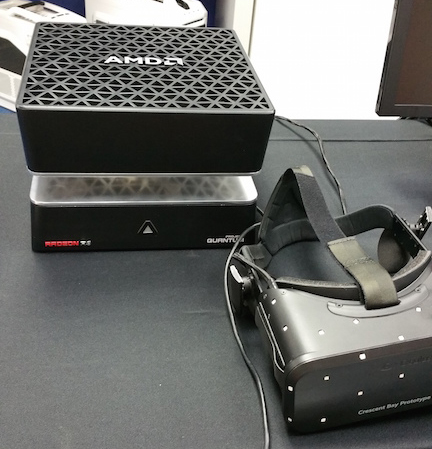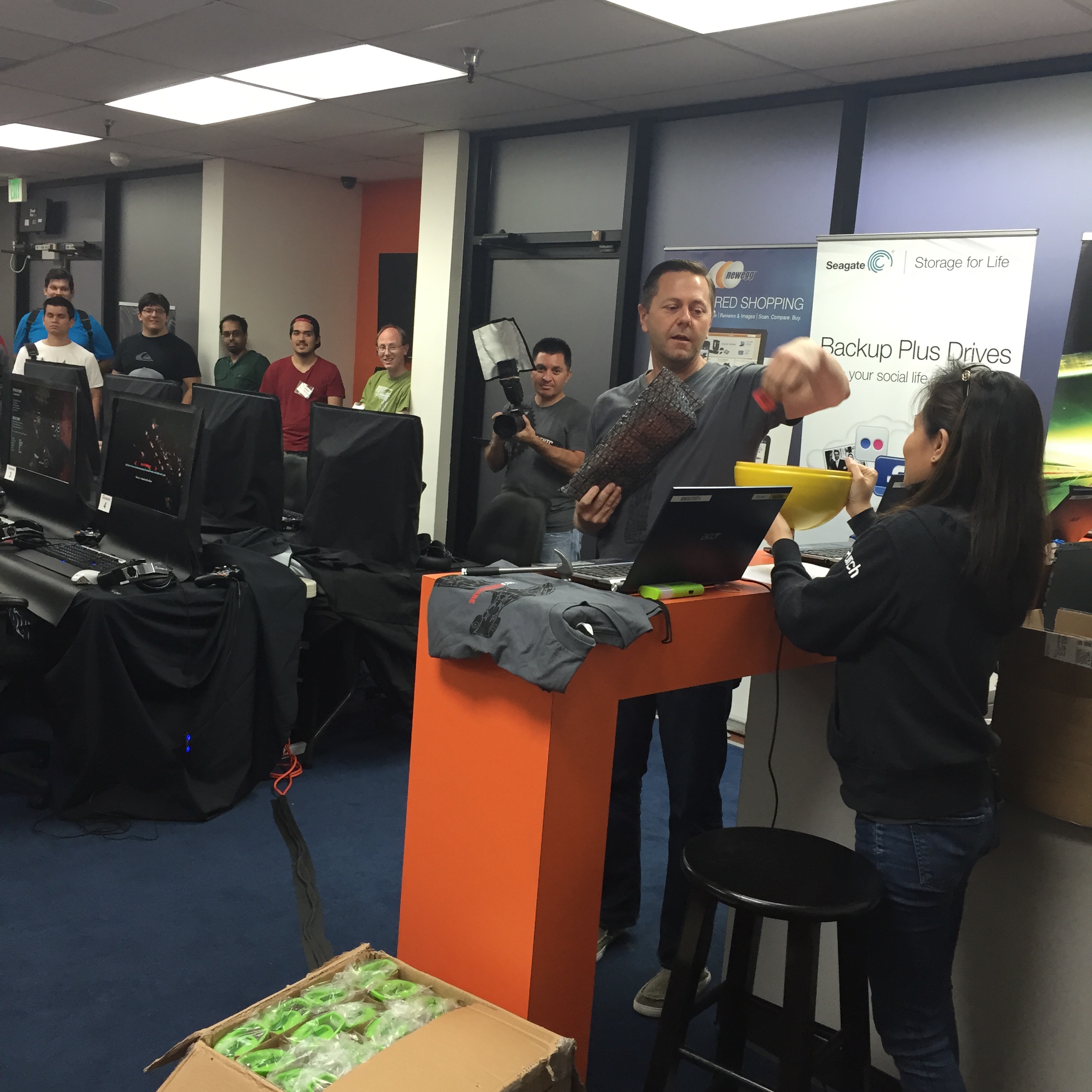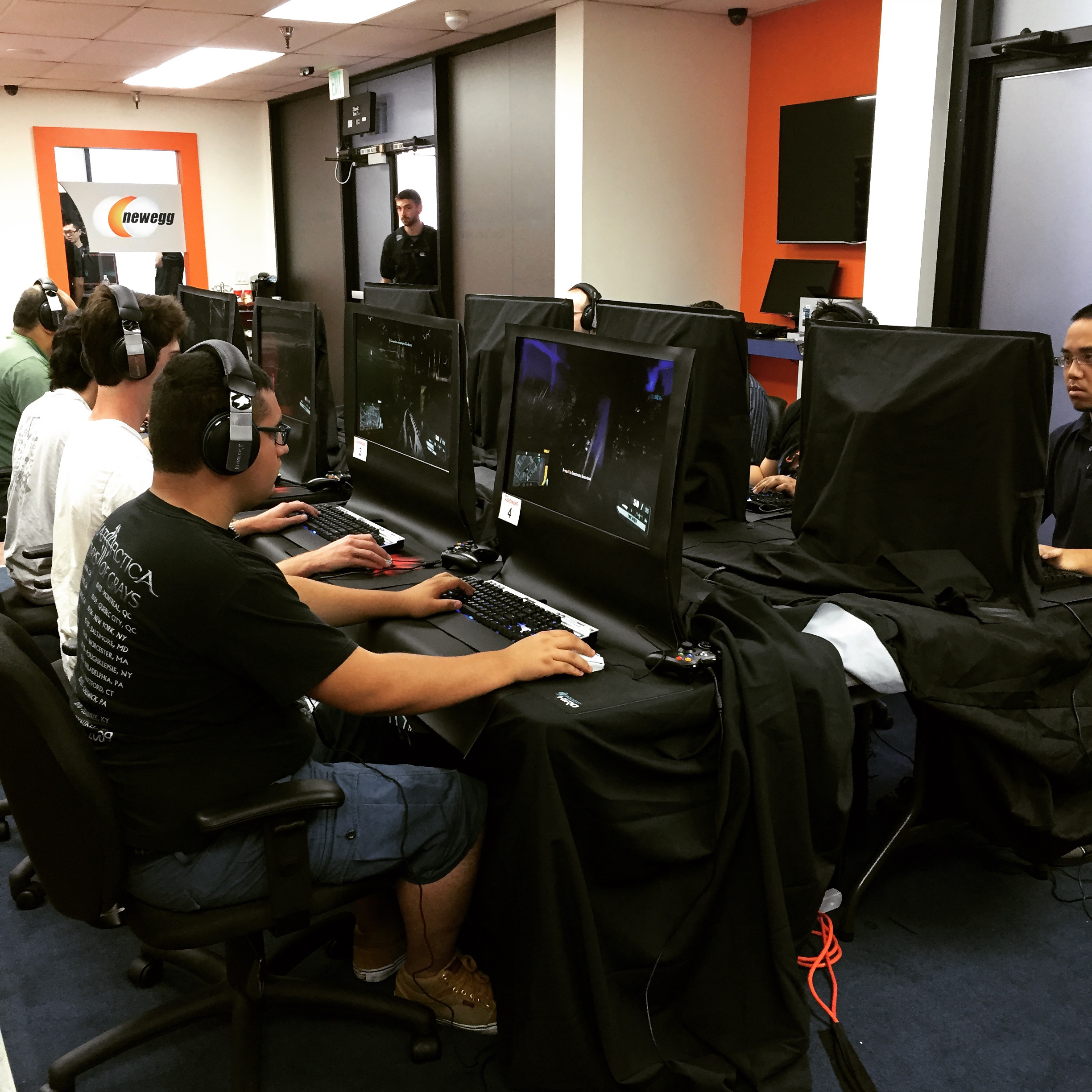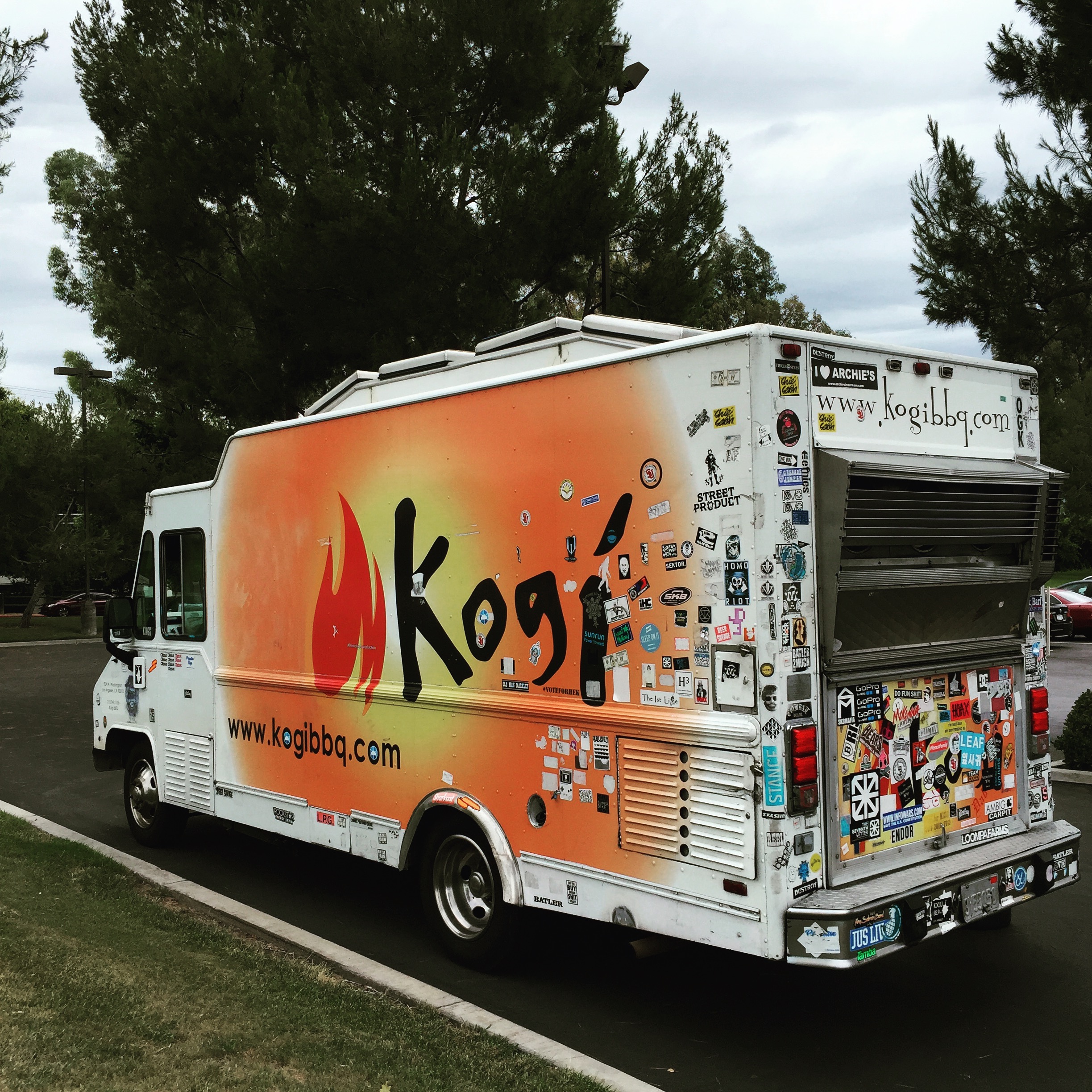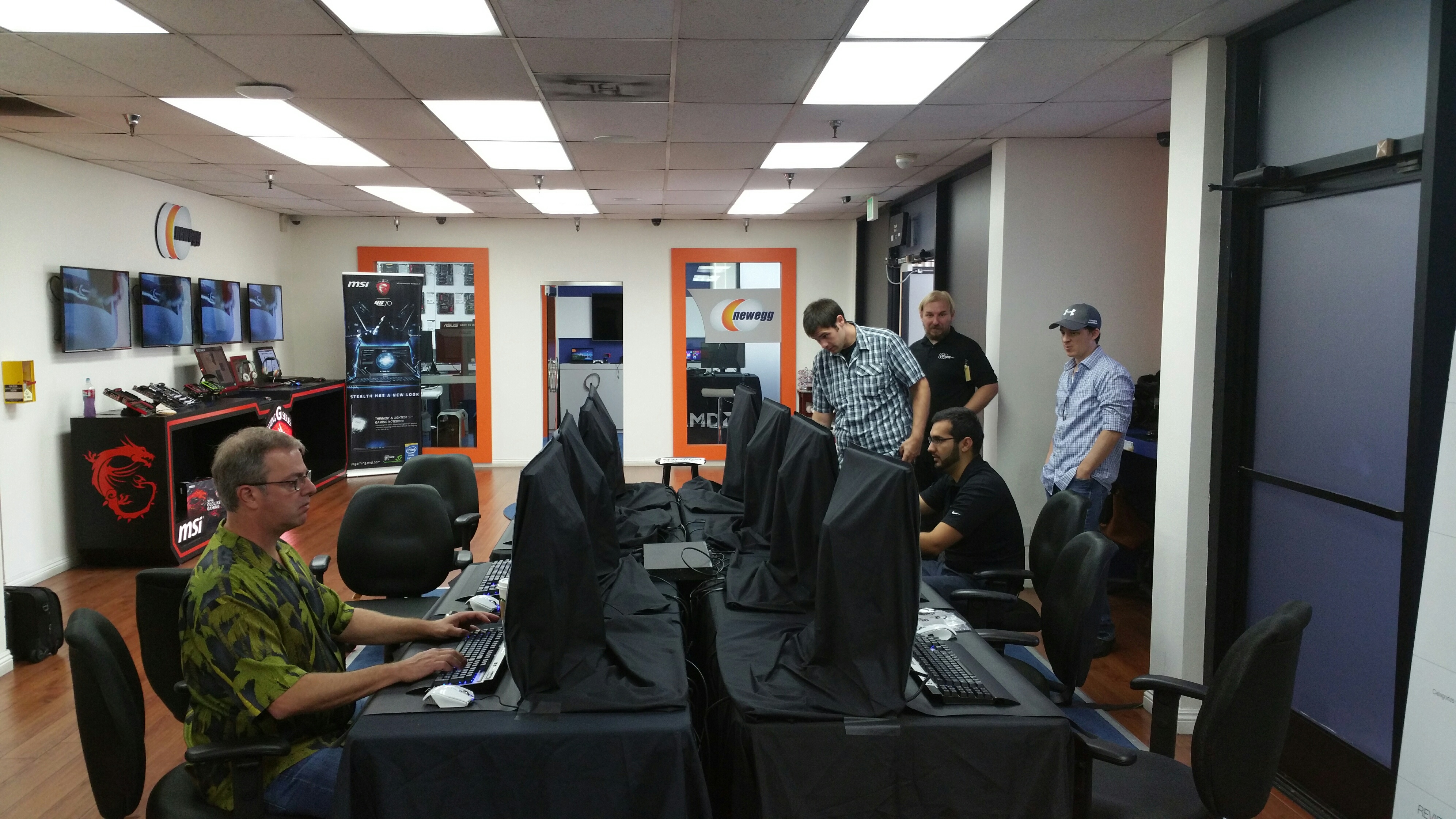Tom's Hardware Readers Pit G-Sync Vs FreeSync In Weekend Battle
Last week, on a rare rainy Saturday in Southern California, about 50 readers joined Tom's Hardware at Newegg's Hybrid Center for a hands-on showdown between AMD's FreeSync and Nvidia's G-Sync, the two variable refresh rate technologies that have begun showing up in monitors with great frequency. We've been testing those monitors and evolving our methodologies, which you'll see in some upcoming reviews, but because the artifacts of variable frame rates on fixed display refresh rates are best seen with the naked eye, we needed some naked eyes.
In the coming weeks we will publish an in-depth analysis of FreeSync, written by Filippo Scognamiglio. Filippo penned our initial preview of G-Sync about 18 months ago, and it's time to give FreeSync its turn. And finally, we will provide the results of our reader testing from Saturday's event in an article written by Chris Angelini. That piece will not only tell you which technology won the battle, but it will crawl beneath the surface of that answer, because sometimes the most interesting nuggets are as tasty as truffles, and require just as much digging.
I'll leave you to figure out why for now, but one piece of data you can continue to help us with is the question of whether or not you turn Vsync on or off during game play, and specifically for which games. We polled readers late Friday night on the Tom's Hardware Facebook page, and on Twitter, but we also posted the question in our graphics card forum here. The response on Facebook was overwhelming, but more answers on the forum poll would also be helpful.
Based on the success of the Saturday event and the feedback we received, we're likely to do more. Those who attended chose between two popular sets of PC games (Crysis 3 and Battlefield 4, or Witcher 3 and Borderlands), and then played them side-by-side on two hidden machines for a total of 30 minutes. We ran eight machines concurrently. After, we asked each player to fill out a brief survey about their experiences. We didn't reveal the technology behind the experiences until after all players were done.
That was the main event, but we had some other goodies in store. For example, AMD brought along its prototype Project Quantum machine, the delicious-looking dual Fiji box with the cooling on top and components on the bottom and glittering AMD-red LEDs (not quite captured in the picture below because it wasn't turned on at the time) in the middle. The Quantum powered an Oculus Rift demo that everyone got to try.
MSI and Zalman, two of our sponsors, brought gaming gear, some gaming laptops running G-Sync, and a gaming PC. Nvidia and AMD sent technical representatives, and our attendees kept them busy with questions throughout the day.
And at the very end of the day, we raffled off several prizes: five third-party (Sapphire, XFX and Asus) AMD Radeon 390 graphics cards courtesy of AMD; another AMD Radeon 390 card and an Nvidia GeForce GTX 970 graphics card, along with a couple of battery packs from MSI; an Nvidia Shield and two rare hockey jerseys from Nvidia; and a case, keyboard, CPU cooler, mouse, headset and PSU from Zalman. Most of our sponsors and participating vendors gave away other goodies, like hats, t-shirts, water bottles and the like.
Get Tom's Hardware's best news and in-depth reviews, straight to your inbox.
It was a great way to spend a Saturday. For those who stayed until the bitter end, we talked about the technology inside our test machines, graciously built and provided by Digital Storm, and of course the monitors. The FreeSync display was the Asus MG279Q, and G-Sync was powered by the Acer XB270HU. Those are both 27-inch IPS displays running at 144 Hz.
In other words, our attendees experienced G-Sync and FreeSync on exactly the same piece of glass. But I'll leave it at that for now. Anj Bryant, one of our editorial team members, dressed out all of the displays in what she called monitor burkas.
I'd like to thank all of the readers who helped us, and who will eventually help all of you as you wrestle with variable refresh technology decisions. I would also like to thank Newegg for hosting the event, providing food for all of our attendees (a fantastic food truck serving some of the tastiest tacos around), MSI and Zalman for their sponsorship and the entertainment, Digital Storm for its sponsorship and for building our test systems (including two backup systems that came in handy when a power supply failed us), and Asus and Acer for supplying all of the displays.
And finally I'd like to thank Nvidia and AMD for the incredible support, collaboration and camaraderie in planning this event with us, in the spirited day of final setup, and for graciously hanging around on Saturday and interacting with all of the Tom's Hardware readers. As you can imagine, there was quite a bit at stake here, and representatives from both companies were professional and friendly, yet also competitive, until the final frame.
Fritz Nelson is the Editor-In-Chief of Tom's Hardware. Follow him on Twitter, Facebook and Google+. Follow Tom's Hardware on Twitter, Facebook and Google+.
-
ubercake The outcome of this "experiment" could very well determine the future graphics cards in my main gaming machine...Reply
I can't wait to read about the event. -
virtualban My problem with these technologies is how our brain adapts. In the end the most popular technology will look better subjectively despite how it stands objectively, if they are dissimilar enough to each other.Reply
I remember a few years ago pushing the limits of my computer and having a game running at 12 to 17 fps, which got used to and did not see a slide show.
-
xenol How about this: why do we need refresh rates and vertical syncing anymore? These are just carry-overs from when we were using display technologies that actually needed to refresh.Reply
LCDs, OLEDs, quantum dots, these all no longer need to refresh. We should be able to just directly change the pixel rather as fast as its response time allows rather than just waiting on some "synching" and redraw the whole thing. We should just get rid of the concept of refreshing in monitors. It would make G-Sync and Freesync a moot point. -
quilciri Saw the headline for this article. Got Breakfast and coffee. Eagerly sat down to enjoy bacon and the endgame results. Am blue-balled. Discovered it is in fact possible to eat bacon morosely.Reply -
AndrewJacksonZA @quilciri: Breakfast? Coffee? C'mon son, it's past 4:30 PM - home time now! :-)Reply -
FritzEiv Sorry @quilciri and @xaephod. I tried to make the headline in such a way that you wouldn't think it was the results. I guess I failed in that. Next time I'll put "(These are not the results)" in the headline :-)Reply -
husker I'd like to know if there is any kind of objective test to see how well freesync/gsync are actually working. For instance, someone may think the FPS is better or worse but a quick fraps test will tell the real story. How do I get a hard nosed, objective, "just the facts, ma'am" handle on the (supposedly) varying refresh rate of my monitor?Reply
